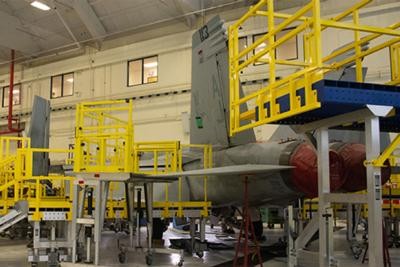Tue, Feb 21, 2023
Once Again, "They Don't Make 'em Like They Used To"
The Congressional Budget Office published its findings comparing the availability and use of the Navy’s F/A-18E/F Super Hornet with its preceding F/A-18C/D Hornets, and found the newer birds wanting.

The Office particularly looked at availability and effective uptime, a shorthand to see just how much use the taxpayer actually gets out of their fancy new jets compared to the outgoing ones. Overall, the Office found that "availability rates by fiscal year are lower and declined faster for both types of Hornets than for the rest of the Department of the Navy’s Fleet."
Second, the Super Hornets were found to "have aged more adversely than their predecessors," comparing unfavorably at 10 years of age compared to the older first-gen Hornet. Perhaps more painful was the note that "Super Hornet availability at age 10 was about 18 percentage points lower than F/A-18C/D availability at age 10 and is comparable to F/A-18C/D availability at age 20."

They note that flying hours can't quite account for the variance in availability. Aside from "modestly exceeding" flying hours in the "initial years of operation of both fleets", the Super Hornet has been flying 4 hours less per month than their equivalently-aged Hornets did.
Perhaps offering a bandaid, the Office added a hopeful note that "availability rates of Super Hornets may stabilize or continue to decline," citing possibilities of increasing maintenance budgets or modifications to improve uptime in the future. They just as quickly come back down to Earth, however, saying "the experiences of the oldest super Hornets suggest that their availability is likely to continue to decline as the fleet ages."
One interesting tidbit hides out within the body of the text, blaming some of the drop in availability on “increased levels of galvanic corrosion arising from the greater use of composite metals in Super Hornets”. It’s unsurprising, given the weight constraints of modern aircraft, but a troublesome aspect to have in a fighter that lives at sea.
More News
From 2023 (YouTube Edition): "Ain’t Your Daddy’s Super Cub”—Don Wade Co-owned by Don and Ron Wade—the former of Don’s Dream Machines, a storied >[...]
Pilot-Rated Passenger Reported That The Pilot Did Not Adequately “Round Out” The Landing Flare And The Airplane Bounced And Yawed To The Right Analysis: The pilot state>[...]
Dead Reckoning Dead reckoning, as applied to flying, is the navigation of an airplane solely by means of computations based on airspeed, course, heading, wind direction, and speed,>[...]
Aero Linx: Lake Amphibian Club This website is created and sponsored by the Lake Amphibian Club, to help spread the word about these wonderful, versatile amphibians that can land j>[...]
“I am deeply honored to be sworn in as NASA administrator. NASA’s mission is as imperative and urgent as ever — to push the boundaries of human exploration, ignit>[...]
 Classic Aero-TV: In Praise of Alabamas Patriot Aircraft USA
Classic Aero-TV: In Praise of Alabamas Patriot Aircraft USA NTSB Final Report: Cirrus Design Corp SR22
NTSB Final Report: Cirrus Design Corp SR22 ANN's Daily Aero-Term (12.21.25): Dead Reckoning
ANN's Daily Aero-Term (12.21.25): Dead Reckoning ANN's Daily Aero-Linx (12.21.25)
ANN's Daily Aero-Linx (12.21.25) Aero-News: Quote of the Day (12.21.25)
Aero-News: Quote of the Day (12.21.25)




